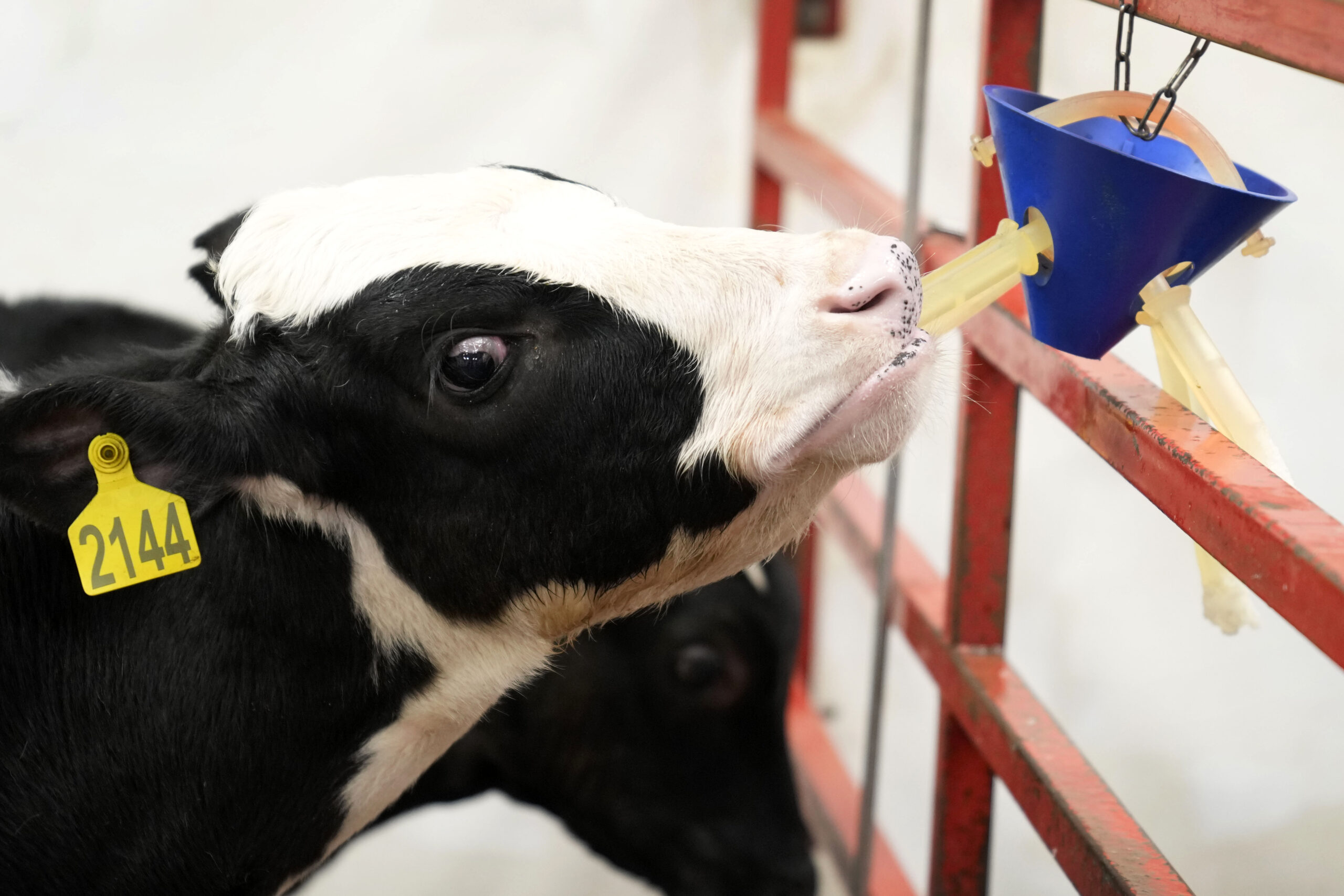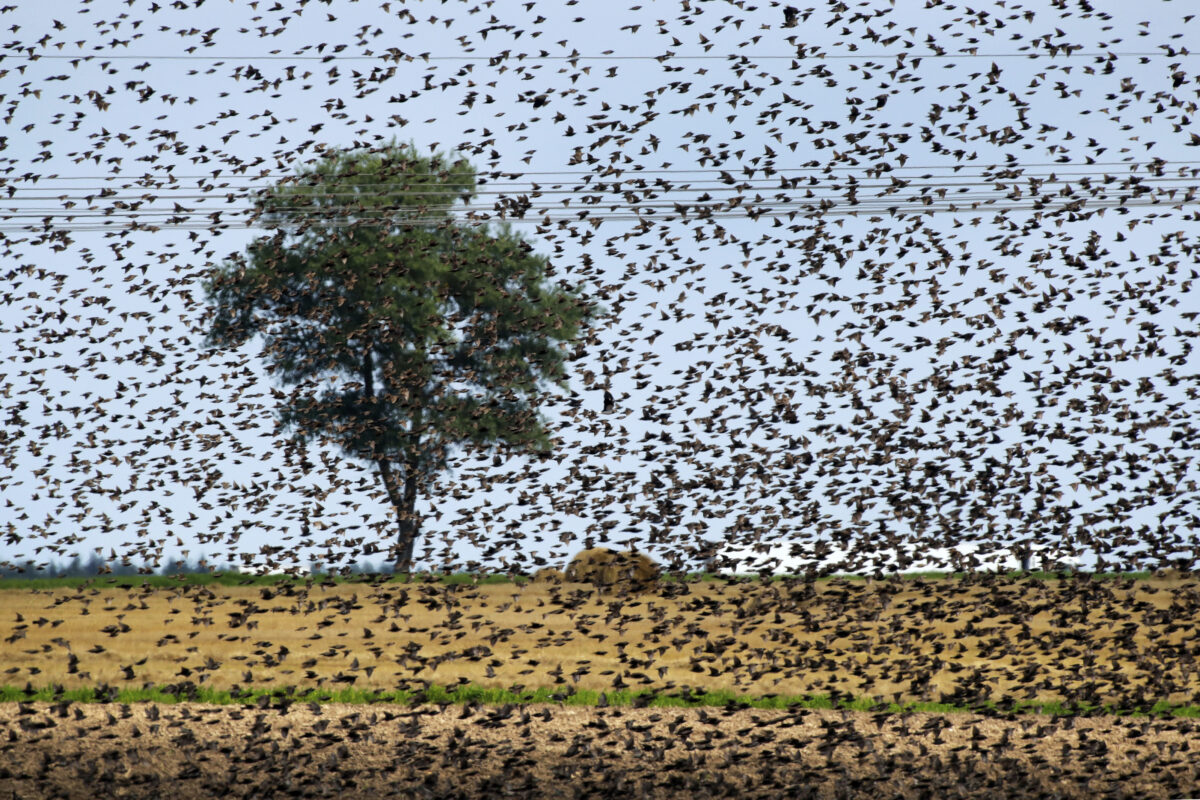What to know about Nevada’s evolving bird flu outbreak

A new variant of the bird flu sweeping the nation has been reported in a Churchill County dairy, marking the first time the variant — reported in wild birds and other species — has been detected in cows anywhere in the country.
“This is a significant finding,” said Nevada Department of Agriculture (NDA) Director J.J. Goicoechea. “These viruses continue to mutate.”
Bird flu is a highly contagious virus that can lead to illness in livestock and death in poultry. The slaughter of millions of sick and possibly infected chickens has led to skyrocketing egg prices nationwide. Dairies have seen lesser effects, and pasteurized milk and cheese products are unaffected.
The Centers for Disease Control and Prevention maintains that the risk to humans is low, although the first human death in the United States from the virus was reported last month. There has been one reported case in Nevada, a Churchill County man who is mildly ill from the virus.
The originally reported strain — B313 — has been circulating since March. The new strain — D1.1, identified last month — is similar, but with a shift in DNA sequencing.
Where it’s found
Nevada’s first ever reported case of bird flu was in 2022, in a flock of backyard chickens in Carson City.
It took nearly three years for the virus to spread to the state’s livestock — in December, a case was reported at a Nye County dairy.
There have been seven confirmed cases in the state — one in Nye County and six in Churchill County. All seven areas are under quarantine, including 14,000 cows in Churchill County and 22,000 cows in Nye County.
The Nye County dairy is infected with the original strain of the virus, while the Churchill County operations are infected with the new strain. The Churchill County infections were discovered in January.
During a December interview with The Nevada Independent, Goicoechea said that if the virus spread from Southern to Northern Nevada, it could spread more quickly because production facilities are clustered closer together in the north, adding that his goal was to “snuff this out and prevent it from getting to Northern Nevada.”
“We did everything we could to keep B313 out of here. And we did. That strain never got out of Southern Nevada,” Goicoechea said in a Feb. 7 call. “But we can’t control wild birds migrating … [the new strain] literally fell out of the sky.”

How it spreads
The Nye County case was spread from cow to cow, but the Churchill County cases are believed to have spread via wild birds. Officials are referring to the new virus as a “spillover event” — when the virus jumps from one species, such as wild birds, to another, such as dairy cows.
There is currently no evidence of person to person spread of the virus, according to the Central Nevada Health District.
The new strain has been found in wild bird species common to Northern Nevada. One potential spreader of the virus is the European starling, a non-native bird that gravitates to dairies, where it eats, and defecates in, the cattle’s food. In the fall and winter, starlings often gather at animal feedlots, where they devour cattle feed and are common carriers of salmonella and E. coli.
Officials are not certain if European starlings are spreading the virus, but given their propensity to carry disease and their prolific populations — estimated to be about 200 million nationwide — they could be the carrier.
Rural Northern Nevada’s wildlife refuges, dairies and wetlands attract the birds. If they migrate, they could carry the new strain of virus to other livestock, Goicoechea said.
“That is my major concern. I’m trying to do everything I can to keep this in Churchill County,” he said. “With 100,000 starlings flying around, and we’re not sure how much of the virus they are carrying. It gives me great concern [that] they are coming on and off an infected premises and going somewhere else.”
The Nevada Department of Agriculture annually partners with the United States Department of Agriculture’s (USDA) Wildlife Services to reduce the number of European starlings in agricultural areas.
In addition to carrying disease, they can cause substantial economic harm, according to the USDA — in 2017, the department estimated that starlings are the most economically harmful bird species in the nation, causing well over $1 billion in damages. Previous surveys indicated that dairies with between 1,000 and 10,000 starlings on site faced 38 percent higher veterinary costs because of the birds’ propensity for carrying illness; at the time, the average cost of an outbreak of salmonella was $4,000 per farm per incident.
Nevada’s starling abatement program (utilizing avicide) is expected to begin this week — their removal is critical to mitigating the spread of disease, according to the NDA.
Symptoms
The symptoms of either strain of the virus are mild in dairy cows, Goicoechea said. The animals get a slight fever and produce less before recovering, and the new strain of virus has resulted in even fewer decreases in production than the original strain. The Nevada Department of Agriculture is monitoring milk silos to detect the virus before dairy cows begin showing symptoms.
Consumption of milk from infected cows remains safe to drink, Goiecoechea said.
“Pasteurization works. Our dairy supply is safe,” he told The Nevada Independent. But, he cautioned, people should only consume pasteurized milk and cheese — untreated dairy products can potentially contain the virus.
Human illness
The first case of human illness from bird flu was reported in a Churchill County man who works at a dairy in the county, according to the Central Nevada Health District. The man had conjunctivitis (commonly known as “pink eye”) and did not report any other symptoms.
The risk to the general public remains low, although those who work with or have exposure to birds, poultry or cows are at higher risk. Symptoms will typically appear within 10 days of exposure.
Seasonal flu vaccinations do not protect people against the virus.
People are advised to not touch any sick or dead animals. The general public can report those to USDA’s Wildlife Services and farmers and ranchers can report them to the Nevada Department of Agriculture.
Legislation helps with egg shortage
Nationwide, the bird flu has resulted in the slaughter of millions of chickens, resulting in egg shortages and record-high prices.
During the 2021 legislative session, Assemblyman Howard Watts (D-Las Vegas) introduced AB399, a bill that only allows cage-free eggs or egg products to be sold in Nevada. The bill was ultimately signed into law.
Nevada does not have any large-scale egg producers, so eggs coming into the state must meet the guidelines. Many of Nevada’s neighboring states also have a cage-free requirement; with more Western states requiring cage-free eggs, demand is outpacing supply and raising prices.
On Monday, Watts presented a new bill at a hearing that could help bridge the gap between the nationwide egg shortage and the effort to procure eggs from more humane sources. AB171 would allow the state to suspend those requirements for as many as 120 consecutive days, twice per year.
